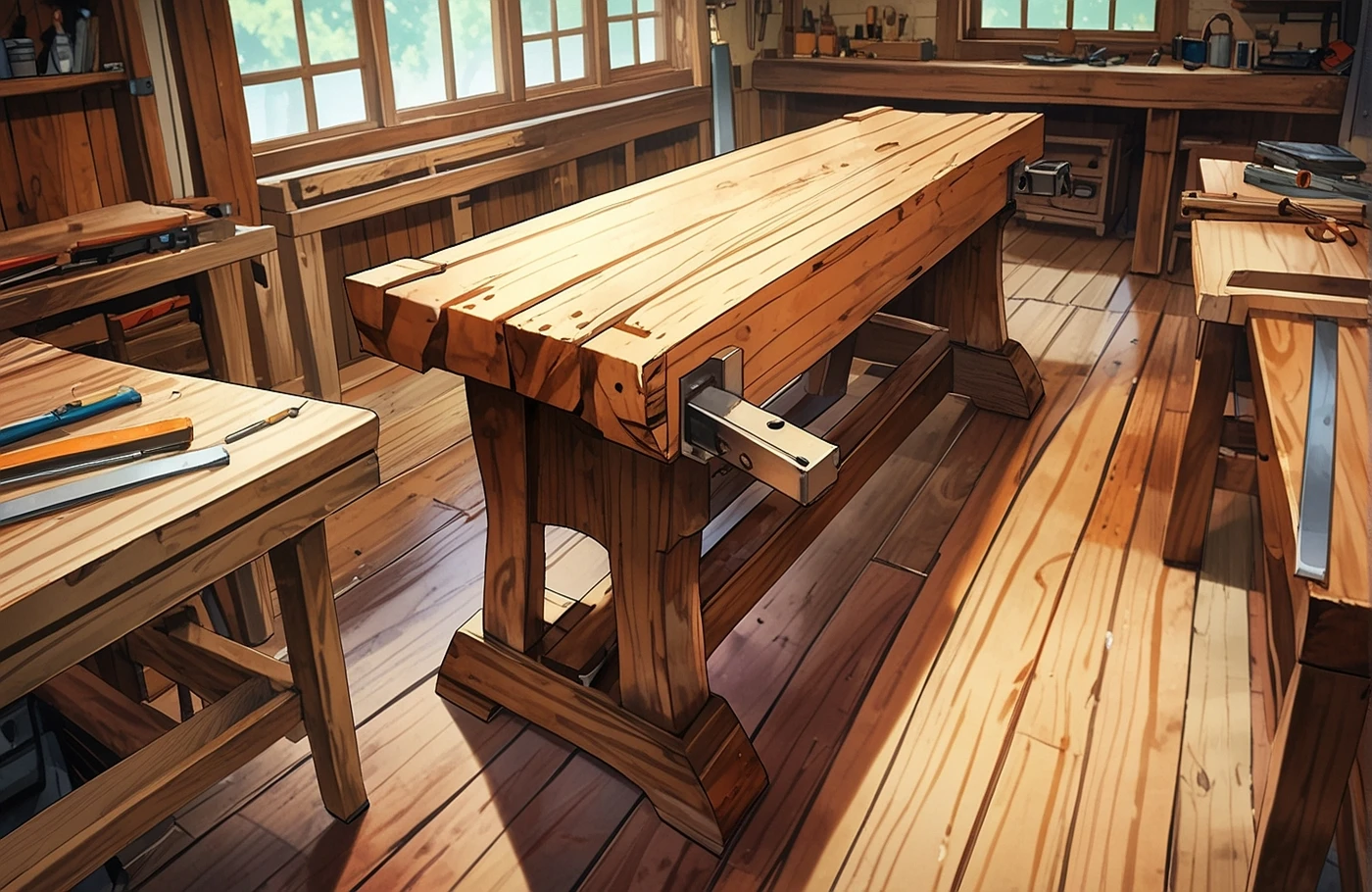How To Get Wood Out Of Hole Saw

Effective Techniques to Extract Wood from Hole Saws
Efficient Methods to Dislodge Wood from Hole Saws
When working with hole saws, it's common to encounter the frustrating problem of wood getting stuck inside the tool. This can not only impede your progress but also potentially damage the saw itself. Fortunately, there are several effective techniques you can employ to efficiently extract the wood and keep your hole saws in top condition.
Utilize a Wood Plug Extractor
One of the most effective tools for removing wood from hole saws is a wood plug extractor. This specialized tool is designed to grip the wooden plug firmly and allow you to pull it out of the saw with ease. To use a wood plug extractor, simply insert the tapered end into the hole saw and twist it clockwise. The extractor's serrated jaws will latch onto the wood, enabling you to extract it cleanly.
Try the Hammer and Punch Method
If you don't have a wood plug extractor, you can try the hammer and punch method. Start by placing the hole saw on a sturdy surface, such as a workbench. Use a punch or a small metal rod and carefully insert it into the center of the wood plug. Then, gently tap the punch with a hammer to dislodge the plug. Be cautious not to strike too hard, as this could potentially damage the saw.
Utilize Compressed Air
Another effective technique is to use compressed air to blow out the wood plug. Place the hole saw over a trash can or on a surface that can contain the debris, and then use a compressed air canister or an air compressor to blast air through the hole saw's teeth. This can often dislodge the wood plug, allowing you to remove it easily.
Soak in Solvent
If the wood plug is particularly stubborn, you can try soaking the hole saw in a solvent. Certain solvents, such as mineral spirits or lacquer thinner, can help soften the wood and make it easier to remove. Submerge the hole saw in the solvent, let it soak for a few minutes, and then try the hammer and punch method or the compressed air technique again.
Employ a Drill Press
If you have access to a drill press, you can use it to your advantage. Secure the hole saw in the drill press and use a drill bit that is slightly smaller than the hole saw's diameter to bore through the wood plug. This will help break up the wood, making it easier to remove.
Take Preventative Measures
To avoid the problem of wood getting stuck in your hole saws in the first place, consider taking some preventative measures. Ensure that the hole saw is the appropriate size for the material you're working with, and make sure to keep the teeth of the saw sharp and well-maintained. Additionally, you can apply a lubricant or cutting oil to the saw before use, which can help prevent the wood from adhering to the teeth.
By implementing these techniques, you'll be able to efficiently remove wood from your hole saws and keep your tools in optimal working condition. Remember, proper maintenance and the right tools can go a long way in ensuring a smooth and productive woodworking experience.
Preventing Stuck Wood in Hole Saws: Best Practices
Clearing Jammed Hole Saws: Effective Techniques and Tips
Hole saws are an essential tool for DIY enthusiasts and professionals alike, allowing for precise and clean cuts in various materials. However, one common issue that can arise is the wood becoming stuck within the hole saw, causing frustration and potentially damaging the tool. In this article, we'll explore effective strategies to prevent and resolve this problem, ensuring your hole saw remains a reliable and efficient part of your workshop arsenal.
Proper Hole Saw Selection and Usage
The root cause of stuck wood in hole saws often lies in the initial selection and usage of the tool. Choosing the right hole saw for the job is crucial. Make sure to select a saw that is appropriately sized for the thickness of the material you'll be cutting. Using a hole saw that is too small for the job can lead to the wood becoming wedged and stuck. Additionally, ensure the teeth of the hole saw are sharp and in good condition, as dull blades are more likely to bind and cause the wood to become trapped.
When using the hole saw, apply steady, even pressure and avoid forcing the tool. Sudden or excessive force can cause the wood to bind and get stuck. Maintain a straight, perpendicular angle as you cut, and be mindful of the depth of the cut. Stopping the cut before the hole saw has fully penetrated the material can help prevent the wood from becoming trapped.
Lubrication and Cooling
Proper lubrication and cooling of the hole saw can significantly reduce the chances of the wood becoming stuck. Apply a generous amount of cutting oil or lubricant to the saw's teeth and the material being cut. This helps to reduce friction and heat buildup, which can cause the wood to bind.
Additionally, take breaks during the cutting process to allow the hole saw to cool down. Excessive heat buildup can cause the wood to expand and become lodged within the saw. By intermittently pausing your work and allowing the tool to cool, you can minimize the risk of the wood becoming stuck.
Extraction Techniques
Despite your best preventive efforts, there may be times when the wood becomes stubbornly stuck in the hole saw. In such cases, it's important to have a few extraction techniques at your disposal.
One effective method is to use a punch or a narrow tool to gently tap the stuck wood out of the hole saw. Apply light, controlled taps around the perimeter of the saw to gradually work the wood loose. Avoid applying excessive force, as this can further damage the saw or the material.
If the wood is particularly stubborn, you can try using a pair of pliers or locking pliers to grip the exposed end of the wood and carefully pull it out. This technique works best when there is enough of the wood protruding from the hole saw to allow for a secure grip.
In some cases, the wood may be so tightly stuck that the hole saw itself needs to be disassembled. Refer to the manufacturer's instructions to safely dismantle the saw and remove the trapped wood. Exercise caution and use appropriate safety gear when undertaking this approach.
Preventive Maintenance and Storage
Regular maintenance and proper storage of your hole saws can go a long way in preventing the issue of stuck wood. Ensure that you clean the saw thoroughly after each use, removing any residual sawdust or debris. This helps to maintain the smooth operation of the tool and reduces the likelihood of the wood becoming trapped.
When not in use, store your hole saws in a dry, protected environment. Exposure to moisture or extreme temperatures can cause the saw's components to deteriorate, potentially leading to binding and stuck wood. Invest in a dedicated tool storage solution, such as a toolbox or cabinet, to keep your hole saws in optimal condition.
By following these best practices for hole saw usage, maintenance, and extraction techniques, you can minimize the frustration of dealing with stuck wood and ensure your hole saws continue to perform reliably for years to come.
Troubleshooting Common Issues with Wood Extraction from Hole Saws
Troubleshooting the Removal of Wood from Hole Saws
Hole saws are an essential tool for woodworkers, allowing them to create clean, precise holes in various materials. However, one common issue that arises is the difficulty in removing the extracted wood from the hole saw. This can not only be frustrating but also hamper the efficiency of your woodworking projects. In this article, we'll explore several effective strategies to help you overcome this challenge.
Proper Hole Saw Selection and Maintenance
The first step in ensuring smooth wood extraction is to select the right hole saw for the job. Choose a saw with a size that matches the desired hole diameter and is designed for the specific type of wood you'll be working with. Additionally, it's crucial to maintain your hole saw by regularly cleaning and lubricating it. Over time, the teeth can become dull, making it harder to cut through the wood cleanly and increasing the likelihood of the wood getting stuck.
Effective Techniques for Removing Stuck Wood
When the wood does become stuck in the hole saw, there are several techniques you can try to dislodge it. One of the most common methods is to use a screwdriver or other thin, sturdy tool to gently pry the wood out. Be careful not to damage the hole saw or the workpiece in the process.
Another effective technique is to tap the side of the hole saw lightly with a rubber mallet or a piece of wood. This can help to loosen the grip of the wood and make it easier to extract. Avoid using excessive force, as this can damage the hole saw or the workpiece.
Utilizing Specialized Tools and Accessories
If the above methods don't work, you may need to invest in specialized tools or accessories to aid in the wood extraction process. One such tool is a hole saw arbor with a built-in ejection mechanism. This feature allows you to easily push the wood out of the hole saw once the cutting is complete.
Additionally, there are various accessories available, such as hole saw guides or centering bits, that can help to ensure a more secure and accurate fit of the hole saw, reducing the likelihood of the wood becoming stuck.
Preventing Future Wood Extraction Issues
To minimize the chances of encountering wood extraction problems in the future, it's important to follow best practices when using hole saws. This includes:
- Drilling at the appropriate speed and applying steady, even pressure to avoid binding or overheating the hole saw.
- Regularly cleaning and lubricating your hole saws to maintain their performance.
- Choosing the right hole saw size and type for the material you're working with.
- Ensuring that the workpiece is securely clamped or held in place to prevent shifting during the cutting process.
By following these tips and techniques, you can effectively troubleshoot and overcome the common issue of wood extraction from hole saws, ensuring a more efficient and successful woodworking experience.
Maximizing Hole Saw Efficiency: Strategies for Clean Wood Removal
Strategies for Efficient Wood Removal with Hole Saws
When working with hole saws, ensuring a clean and efficient wood removal process is crucial for achieving professional-looking results. Whether you're a DIY enthusiast or a seasoned contractor, mastering the art of wood extraction can save you time, effort, and frustration. In this article, we'll explore various strategies and techniques to help you maximize the efficiency of your hole saw usage.
Proper Hole Saw Selection
The first step to efficient wood removal is selecting the right hole saw for the job. Consider the size of the hole you need to create, the thickness of the material you're cutting, and the type of wood you're working with. Choose a hole saw with the appropriate diameter and tooth configuration to ensure a clean, smooth cut.
Hole Saw Lubrication
Proper lubrication is key to reducing friction and heat buildup during the cutting process. Apply a generous amount of cutting oil or lubricant to the hole saw teeth before use. This will help the saw glide through the wood more smoothly and prevent the wood from binding or tearing.
Controlled Cutting Speed
Maintaining the correct cutting speed is crucial for clean wood removal. Rushing the process can lead to binding, tear-out, or even damage to the hole saw. Consult the manufacturer's recommendations for the optimal cutting speed for your specific hole saw and material.
Frequent Hole Saw Cleaning
During the cutting process, wood shavings and debris can accumulate inside the hole saw, reducing its efficiency and potentially causing the wood to bind. Regularly stop and clean the hole saw to remove any accumulated material. This will ensure a smooth and consistent cutting action.
Effective Wood Extraction Techniques
Once the hole has been cut, the next challenge is removing the wood plug or core. Here are some techniques to help you extract the wood cleanly:
-
Tapping: Gently tap the back of the hole saw with a mallet or the handle of your screwdriver. This can help dislodge the wood plug and allow you to remove it easily.
-
Drilling: If the wood plug is stuck, carefully drill a small pilot hole through the center of the plug. This will create a weakened point that you can then use to pry the plug out.
-
Screwing: For stubborn wood plugs, you can try screwing a wood screw into the center of the plug and then pulling it out.
-
Air Compressor: Compressed air can be a powerful tool for wood extraction. Carefully insert the air nozzle into the hole saw and use a short burst of air to eject the wood plug.
Proper Hole Saw Maintenance
Maintaining your hole saws in good condition is essential for ensuring consistent and efficient performance. Regularly clean and lubricate the saw, and inspect the teeth for any signs of wear or damage. Replace the hole saw blade when necessary to maintain optimum cutting performance.
By following these strategies and techniques, you can maximize the efficiency of your hole saw usage and enjoy clean, professional-looking results every time. Remember, investing the time to master these skills will pay off in the long run, saving you time, effort, and frustration on your woodworking projects.
Maintaining Hole Saws for Effortless Wood Extraction
Unleashing the Power of Hole Saws: Effortless Wood Extraction
Hole saws are an essential tool for any woodworker or DIY enthusiast, allowing you to create precise circular openings in various materials, including wood. However, maintaining these versatile tools can be the key to ensuring effortless wood extraction and prolonging their lifespan. In this comprehensive guide, we'll explore the best practices for maintaining your hole saws, helping you maximize their performance and efficiency.
Proper Hole Saw Cleaning and Storage
One of the most critical aspects of hole saw maintenance is keeping them clean and well-maintained. After each use, it's essential to thoroughly clean the saw's teeth and arbor. This can be done by gently brushing away any sawdust or debris with a soft-bristled brush. Avoid using abrasive materials, as they can damage the saw's cutting edges.
Once cleaned, it's important to properly store your hole saws. Store them in a dry, cool place, preferably in a tool chest or cabinet, to protect them from moisture and physical damage. This will help prevent rust and ensure your hole saws are ready for their next use.
Sharpening and Repairing Hole Saws
Over time, the cutting edges of your hole saws will become dull, reducing their efficiency and making it increasingly difficult to extract wood cores. To maintain optimal performance, it's recommended to sharpen your hole saws regularly. This can be done using a sharpening file or a dedicated hole saw sharpening tool.
When sharpening, be sure to maintain the original tooth angle and profile of the saw. This will ensure the cutting edges remain effective and prevent premature wear. If a tooth is severely damaged or worn, you may need to replace the entire saw.
In addition to sharpening, it's essential to inspect your hole saws for any other signs of wear or damage, such as bent or broken teeth, loose arbors, or damaged pilot bits. If any of these issues are present, it's best to repair or replace the affected components to prevent further damage and ensure the safety of your woodworking projects.
Lubricating and Cooling Hole Saws
Proper lubrication and cooling are crucial for the longevity and performance of your hole saws. During use, the cutting action generates significant heat, which can cause the saw teeth to become dull more quickly. To combat this, it's recommended to use a cutting fluid or lubricant specifically designed for hole saws.
Apply a small amount of the cutting fluid to the saw's teeth before use, and reapply as needed during the cutting process. This will help to reduce friction, dissipate heat, and extend the life of your hole saws.
Additionally, it's important to avoid overheating your hole saws. If the saw becomes too hot to touch, stop the cutting process and allow it to cool down before continuing. Overheating can cause the saw's teeth to lose their temper, leading to premature dulling and potential damage.
Selecting the Right Hole Saw for the Job
Choosing the appropriate hole saw for your specific project is also an important aspect of maintaining efficient wood extraction. Different hole saw sizes and designs are better suited for various materials, thicknesses, and applications.
When selecting a hole saw, consider factors such as the diameter of the opening you need to create, the thickness of the material you'll be cutting, and the type of wood you'll be working with. Referencing the manufacturer's recommendations or consulting with a knowledgeable hardware store employee can help you make the right choice.
By following these best practices for hole saw maintenance, you'll be able to ensure effortless wood extraction, prolonged tool life, and a more efficient and enjoyable woodworking experience. Remember, well-maintained hole saws can make all the difference in the quality and precision of your projects.
Conclusion
Extracting wood from hole saws can be a frustrating task, but with the right techniques and best practices, it doesn't have to be a constant struggle. By understanding the effective methods for wood extraction, preventing stuck wood, troubleshooting common issues, maximizing hole saw efficiency, and maintaining the tool itself, woodworkers and DIYers can enjoy a seamless and productive experience when using hole saws.
Effective Techniques to Extract Wood from Hole Saws
The key to successfully removing wood from a hole saw lies in the approach. Using a sturdy tool like a flathead screwdriver or a specialized wood removal tool can help pry the wood free with ease. Gently tapping the side of the hole saw with a rubber mallet can also loosen the grip of the stuck wood. For more stubborn cases, soaking the hole saw in a degreasing solution or using compressed air to blow out the wood can be effective.
Preventing Stuck Wood in Hole Saws: Best Practices
To avoid the hassle of stuck wood altogether, it's essential to employ preventative measures. Ensuring the hole saw is properly lubricated with a cutting fluid or oil can help the wood slide out with minimal resistance. Additionally, cutting through the wood in a single, continuous motion, rather than starting and stopping, can prevent the material from binding and getting stuck.
Troubleshooting Common Issues with Wood Extraction from Hole Saws
Even with the best techniques and practices, sometimes unexpected problems can arise. Dealing with wood that is too tough or dense, or encountering a dull or damaged hole saw blade, can make the extraction process much more challenging. In such cases, consulting the manufacturer's instructions, replacing the blade, or using a more powerful tool may be necessary to overcome the issue.
Maximizing Hole Saw Efficiency: Strategies for Clean Wood Removal
For those who rely on hole saws regularly, maximizing their efficiency is crucial. strategies like pre-drilling pilot holes, using a backing board to support the workpiece, and maintaining a consistent cutting speed can all contribute to a cleaner and more effortless wood removal process. Additionally, keeping the hole saw blades sharp and free of debris can greatly improve their performance.
Maintaining Hole Saws for Effortless Wood Extraction
Proper maintenance of hole saws is essential for ensuring their longevity and optimal performance. Regularly cleaning and lubricating the tool, as well as inspecting it for any signs of wear or damage, can go a long way in preventing wood from getting stuck. Additionally, storing hole saws properly, such as in a protective case or organizer, can help maintain their cutting edges and prevent unnecessary dulling or damage.
By mastering these techniques, best practices, troubleshooting strategies, efficiency-boosting methods, and maintenance routines, woodworkers and DIYers can transform the once-frustrating task of extracting wood from hole saws into a seamless and efficient process. Whether tackling a simple home improvement project or a complex woodworking endeavor, the ability to easily remove wood from hole saws can make all the difference in the quality and precision of the final outcome.
Remember, when it comes to hole saws, preparation, prevention, and proactive maintenance are the keys to unlocking effortless wood extraction. By incorporating these strategies into your woodworking or DIY routine, you can save time, reduce frustration, and achieve consistently stunning results, time and time again.



